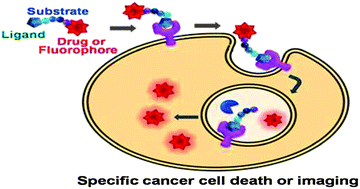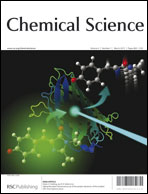Dual-targeting delivery system for selective cancer cell death and imaging†
Abstract
The currently available anticancer agents frequently cause unwanted normal cell death mainly owing to their lack of selectivity for cancer cells. In addition, molecular imaging agents for tumors exhibit low target-to-background ratios. As a consequence, elegant methods that more specifically target cancer cells need to be developed for the improvement of chemotherapeutic efficacy and diagnosis. In a recent effort aimed at improving the tumor selectivity of therapeutic and imaging agents, we designed, synthesized and explored the effectiveness of a dual-targeting delivery system that targets cancer cells more selectively. The new delivery system is composed of a synthetic


 Please wait while we load your content...
Please wait while we load your content...